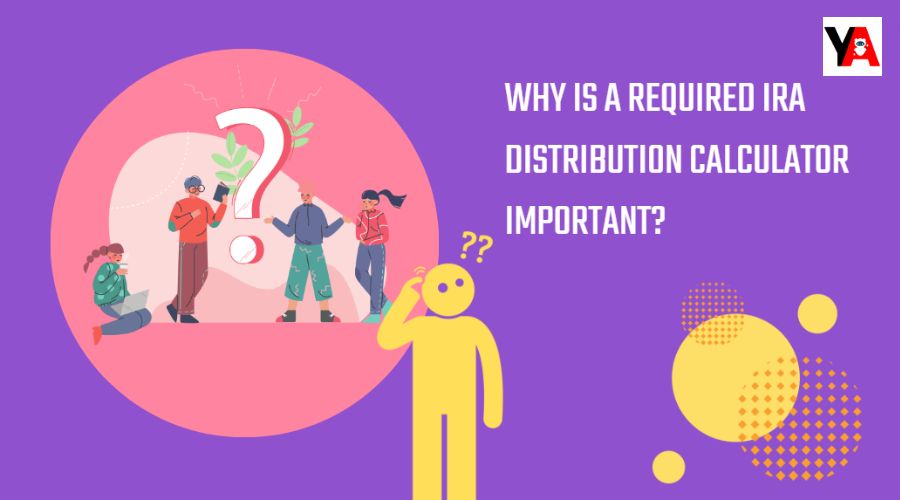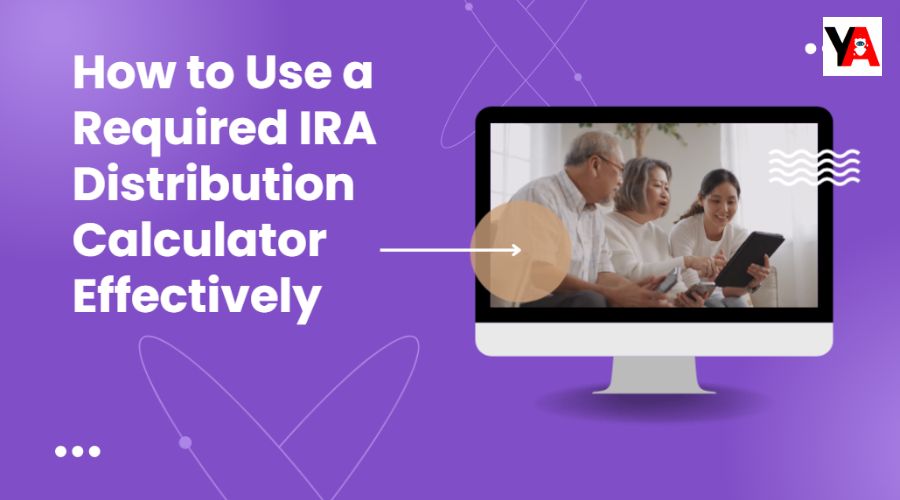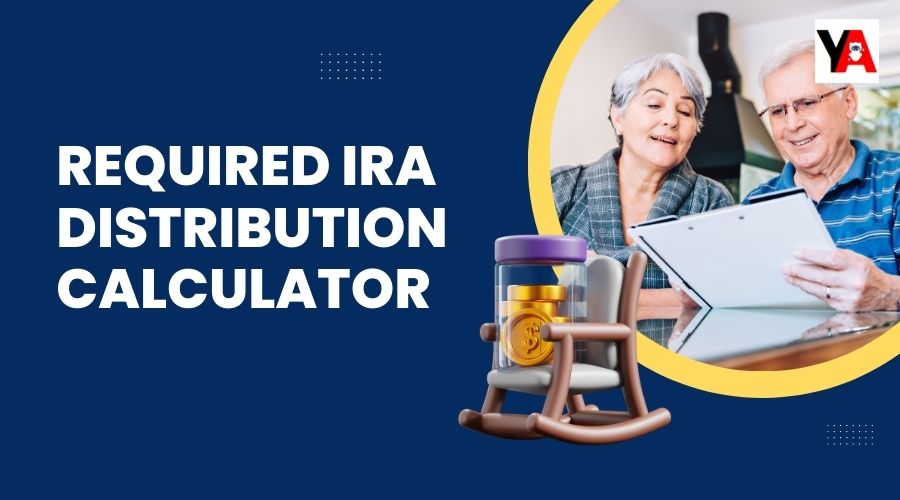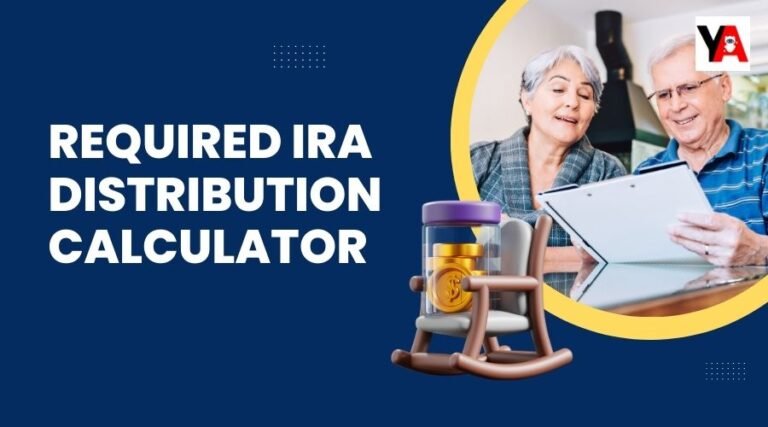Managing your Individual Retirement Account (IRA) is an essential aspect of retirement planning. And, there are some rules around RMDs (Required Minimum Distributions), which make it mandatory for an individual to withdraw a minimum amount from his IRA every year, beginning at a certain age.
Hence, the calculation of the correct amount to be withdrawn annually from the account is essential. That’s where a Required IRA Distribution Calculator comes in and helps. This article will explore what an RMD calculator is, why it’s important, and how to use it effectively.
Table of Contents
ToggleWhat is a Required IRA Distribution Calculator?
An online tool that helps IRA holders calculate the minimum amount they need to withdraw from their retirement accounts each year is referred to as a Required IRA Distribution Calculator. The factors including the age of the account holder, life expectancy, and account balance are taken into account by this calculator to perform the calculation task.
Ensuring that individuals ultimately end up paying taxes on the savings they have made for their retirement is what RMDs are meant for. That’s because these savings were deferred from tax during their contribution and growth phases.
Why is a Required IRA Distribution Calculator Important?

✔️ Ensures Compliance with IRS Rules
If an individual fails to take his RMD, he must pay high penalties. The IRS levies an excise tax on the amount not withdrawn as required. So accurate calculation of RMD is mandatory so that you can withdraw the correct amount and comply with the IRS rules.
That’s where a Required IRA Distribution Calculator comes in handy.
✔️ Facilitates Financial Planning
When it comes to effective planning of the withdrawal of your retirement, an RMD calculator plays the role of helper. Once you get to know your RMD in advance with the use of the calculator, it becomes easy for you to plan budgets for your retirement years.
A proper financial plan in advance makes sure that you end up with sufficient funds needed to cover all your expenses without too quickly exhausting your savings.
✔️ Tax Planning
Another reason why the RMD calculator is so important is that it helps you estimate your taxable income for the year. As RMDs are taxable income, proper tax planning is essential and it becomes easy with the use of this tool, thus helping you minimize the tax liability. Strategies like charitable contributions help stay in a lower tax bracket.
✔️ Informed Decision Making
There are also many other aspects of retirement planning which include claiming Social Security benefits, deciding whether to convert traditional IRA funds to a Roth IRA, and planning how to balance withdrawals from different accounts. It is necessary for you to have a thorough understanding of your RMDs in order to make educated decisions regarding these matters.
How to Use a Required IRA Distribution Calculator Effectively

1. Gather Accurate Information
Make sure you have recorded the accurate account balance you had on December 31st of the previous year. That’s because if you use an incorrect figure as your year-end account balance while calculating your RMD, you will end up with an inaccurate calculation.
2. Consider Multiple Accounts
Possessing multiple IRAs requires you to make calculations for each of those accounts separately. It helps to use a calculator for each calculation and makes sure that you fulfill the total required distribution. Once you have the total amount calculated after adding up the RMDs of all your accounts, you can withdraw it from one or more of your accounts.
3. Plan for Taxes
Taking the tax implications of all withdrawals into consideration is essential as RMDs are taxable. Plan your tax payments and make adjustments in your withholding and payments accordingly by putting into use the Required IRA Distribution Calculator for estimating RMDs.
4. Review Annually
There is nothing always stable in this world. Things keep changing, and so do the circumstances in life and tax laws. So it’s better to consider the calculator and put it into use every year to ensure that the calculations of your RMD are always correct and up to date.
5. Seek Professional Advice
There is no doubt that an RMD calculator or Required IRA Distribution Calculator is quite handy and helps a lot in making calculations of RMDs. But still, consider consulting with a tax professional or financial adviser before making any final decision regarding taxes, etc.
Such consultation will also bring to your notice many additional strategies and insights that will be tailored to your specific situations. In addition, professionals will help you understand complicated tax laws and optimize your retirement withdrawals.
Final Words
For everyone with a traditional IRA, a calculator like the Required IRA Distribution Calculator is a handy tool. It assists you in adhering to IRS regulations and in making well-informed decisions about taxes, retirement, and other matters. However, proper management of IRA withdrawals to ensure a secure retirement requires you to learn to use the calculator effectively.
Also, remember that consulting with a professional will better enhance your strategies regarding your retirement and other financial decisions. And, it will also help you keep yourself on the right track and avoid mistakes.
Frequently Asked Questions
The decision for taking your RMD monthly or annually is totally depends on your financial conditions and personal preferences:
- Monthly RMDs:
- Provide a steady income stream throughout the year.
- Can be a good option for budgeting and managing your expenses.
- Annual RMDs:
- Allow for more flexibility in timing, potentially giving your investments more time to grow before the distribution.
- Simplifies the process by making only one transaction per year.
Tip: Consider your tax situation, investment growth, and income needs when deciding.
RMDs do not stop at any age. As long as you have funds in your Traditional IRA, you must take RMDs each year starting at age 73 (as of 2024, due to changes under the SECURE Act 2.0). However, RMDs are not required from Roth IRAs during the owner’s lifetime, but may be required for beneficiaries after the owner’s death.


















